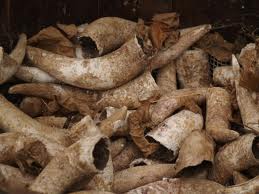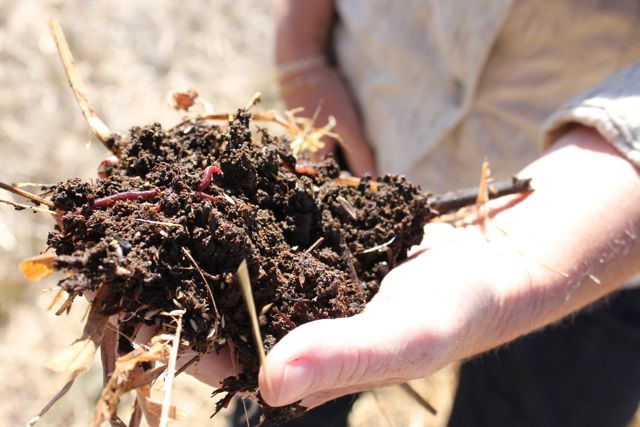I’m not sure which day on the Marie Thun calendar the treatise Expectation or Sensorial Reality? An Empirical Investigation of the Biodynamic Calendar for Wine Drinkers…,by Wendy V. Parr, Dominique Valentin, Phil Reedman, Claire Grose, James A. Green, was published, but it is safe to say the announcement of its results were a metaphorical root day for those who avidly consult the biodynamic calendars in search of runic wisdom.
To be fair, we should not see this at all as an undermining of biodynamic farming. For starters, biodynamics is never a one-size fits all approach, but rather a practice based on empiricism and observation. Treating the vineyard as an entity and holistically is like a doctor treating a patient as an individual rather than a set of symptoms. The treatment is based on the individual’s needs and tolerances. Most farmers that we deal with are intensely focused on the health of the soil and promoting biodiversity in order to get the best of their vineyard without using harmful chemicals. As Luc de Conti once said: “I believe in what goes on beneath my feet and not in the stars.”
For centuries, farmers have worked according to lunar cycles and natural rhythms. Biodynamics is a proactive natural approach, it encourages the vine grower to be amongst his or her vines, actually to farm vine by vine. Such sensitivity reaps rewards in the outcomes. I am not certain when the calendar (which is dedicated to planting and other cyclical activities) began to be applied to when the wines might best flourish – or leaf – and the fact that it has been usurped by the supermarkets to base their tasting dates on, is extremely odd.
This aforementioned study claims to be an empirical investigation and the case for the prosecution is well-made – most of the variables are taken into account, the research is contextualised. I might offer this caveat: I don’t think you can disprove anything on a piece of research which is based on very small sample study. And, at the heart of the research is the human element: the tasters. I don’t question their forensic abilities nor the sensitivity of their palates in detecting nuanced changes in certain wines, but I do question the baggage they consciously or unconsciously bring to the table that may affect the quality of their tasting at a given time. I have been part of enough blind tastings to know that if you were to feed their results into a research study you would come out with steaming pile of contradictions, which would reflect the tenor of the tasting and the results generated, but I fail to see how you can positively interpret the results, unless randomness and confusion are accorded academic merit.
Secondly, the study focused on wines – which, of course, was its remit. And not only wine, but a single grape, Pinot Noir. And not only Pinot Noir but New Zealand Pinot Noir. If I am being mildly facetious I would say that this study only proves that New Zealand professionals can’t empirically detect whether they are tasting New Zealand Pinot Noir on a fruit or root day!
When we think about the biodynamic calendar and its relationship to wine I assume that we are talking the energy movements of a living product. How might this apply to chemically farmed, cold fermented wines made with commercial yeast strains, filtered and heavily sulphured, wines meant to be inert, unchallenging, stable – come hell or bad root day! – is something that perhaps should be factored into the research? A lot of wines are denatured chemical products which begs the question: what is unique to wine (rather than beer, cider, fruit juice, coca cola) that this piece of research should have been triggered?
A wine which is wild fermented with its own yeasts, not filtered and not sulphured is certainly going to change – according to temperature, the interaction with oxygen, the atmospheric conditions. Mutability is written into its DNA. Like human beings, these wines are highly susceptible to external forces. I mention this because all the wines in the experiment, for better or worse, are New Zealand Pinot Noirs, so it would be fascinating to know exactly how they are made. Or whether any of them “wild” and natural, and if so, did these wines show differently as well (and to what degree), or were those tricky/volatile elements filtered out of the equation by technical winemaking? If the production techniques provide the signature aromas and flavours of the wine, then the wines have an intrinsic artifice which would make the vagaries (or otherwise) of the lunar calendar irrelevant. It is one thing to interrogate people on their preferences; equally important to interrogate the wines on their characteristics.

In no particular order, there are other elements to factor in. My sensitivity to wine is different on different days, and even on the same day. This much I know. I can taste the same wine differently -perhaps due to the context. For example, the order in which the wines are tasted may affect my perceptions, the environment, my mood, my boredom threshold, because I’ve noticed something that I didn’t notice the first time, because my palate is constantly being recalibrated. Appreciation of wine is affected by the (quality of) company, the weather and the light. Not to mention the size and quality of the glass and the temperature of the liquid. There’s a palpable energy (not sure how you would empirically measure it) when you taste and drink in good company. With the wine bringing people together in a circle of friendship it has a quality above the analytical nuts and bolts of aromas and flavours. When all these factors may conspire to improve one’s mood and to create the perfect milieu to experience wine, is not the biodynamic calendar then rendered obsolete (even if there was a grain of truth in what is being claimed by proponents for the calendar)?
I did once keep a wine diary and retrospectively checked it to ascertain whether there was a link between epiphanies and downright disappointments and the various cycles in the lunar calendar. On the whole, one would have concluded that fruit and flower days scored highly; however, I tend to drink delicious wines all the time so it is not scientific. You only really notice it when a delicious wine massively underperforms, however, because your expectations of the wine create a taste template in your mind. Rather than attributing it to a duff bottle, or the fact that you might simply be jaded, you discover that it was assayed on a root or leaf day and ascribe the wine’s deficiency to the fact that it was tasted on such-and-such a day.
I wouldn’t disagree with the conclusions in this study. I would say that it is an artificially artless exercise, to coin a phrase. It relates what happened in an experiment when 19 people were effectively put into a taste laboratory and asked to fill in forms about what they were sensing at a given time about a few wines. I notice that the participants were described as professionals – mainly oenologists and winemakers. I don’t think this is wide enough spread with respect towards wine. I also wonder parenthetically about the point of the exercise. The psychology of tasting is far more complex than looking at the results of how fruit/flower/root/leaf days may or may not impact on a few people’s response to a few wines. Yet it is in the nature of the scientific community to hail this as a “eureka moment”, when it is, in reality, a piece of micro-research that tells a tiny part of the story. It may serve partly to invalidate a quasi-superstition, but the methodology is flawed because you surely need to repeat the experiment with different control groups in different environments and different styles of wine, and even then, you will only gain insight into how people taste in those artificial environments. You can also oppose this research with the personal experiences of dozens, maybe hundreds, of individuals, who follow the biodynamic calendar and believed they have proved on their pulses that lunar cycles do affect the way the wine tastes. How wine ultimately tastes involves a cocktail of objective factors filtered through the highly subjective responses of the taster. To abstract one element from this (and assess its validity) is like trying to separate all the various components of the cocktail after it has been shaken.


